The Growth in Achilles' Tendon Ruptures in Sports

Derek M. Hansen - August 2023
Now that we are in the midst of NFL pre-season training camps, the combination of heavy training and competition for a roster spot tends to be a fertile ground for catastrophic injury. While soft-tissue injuries such as hamstring pulls, calf strains and low back pain are a common side effect of training camp, it is the season and/or career ending injuries involving joints and connective tissues that are much more concerning to players and the teams’ head offices.
In particular, we are discussing the dreaded Achilles tendon rupture. If you have ever been present when the thickest tendon in the human body decides to unravel instantaneously, the sound of the ‘pop’ that occurs will haunt you forever, especially if you are a middle-aged former athlete. Individuals who have had the unfortunate experience of having their Achilles tendon rupture during an athletic pursuit will comment that the injury initially felt as though they were kicked or hit with a baseball bat on the heel of their foot. The injury is paralyzing, but almost more psychologically traumatic than physically painful. The schedule for the next four- to six-months is predetermined for the victim and they had better get used to wearing an immobilization boot for a good portion of that time.
Incidence
It does not matter if you are a dynamic professional athlete or a regular weekend warrior, Achilles tendon ruptures are on the rise. A study in Finland determined that there has been steady growth in the incidence of Achilles Tendon Rupture (ATR) from a 2.1 per 100 person-year rate 30 years ago to 21.5 per 100 person-year rate more recently. Even though the mean age for ATR has been between 38 to 43 years, younger individuals are experiencing a greater incidence as of late. The growth in injuries has been primarily attributed to a rise in the number of individuals engaging in athletic pursuits – young and old. Another five-year study tracking 1,431 ATR patients by Bi et al showed a marked increase in ATR cases during the COVID-19 period 291 cases in 2019, 196 in 2020 and 395 in 2021. The significant increase in 2021 was attributed to the drop in activity levels experienced during the initial stages of the COVID-19 pandemic.
In the NFL, one study that tracked the incidence of ATR found that there were a total of 101 players diagnosed with ATR between 2009 and 2016 (or 14.4 cases per season over 7 seasons). This included documentation of a growth in the rate of ruptures from the beginning of the study period in 2009 at 0.341 injuries per 10,000 athlete-exposures to doubling to 0.731 injuries per 10,000 athlete-exposures in 2016. My recent documentation of ATR in the NFL has shown that there were 17 in 2020, 16 in 2021 and 18 in 2022 for an average of 17 per year over three years. It is important to note that the 2019 season recorded only 11 cases of ATR, with some of the subsequent increases attributed to inactivity during the initial COVID-19 restrictions. At the time of the writing of this article, I have already documented 7 cases of ATR in the NFL after only one week of training camp completed. This is compared to documented rates in the NFL between 1980-2001 where the League averaged 4.1 ATR cases per year.
Anatomy of an Achilles Tendon Rupture
As was mentioned previously, the Achilles tendon is the thickest and strongest tendon in the human body, absorbing two-to-three times bodyweight during walking, and capable of handling as much as 10 times bodyweight during explosive movements. The average length of the Achilles tendon is 15 cm with most ruptures occurring 2-6 cm from the insertion in the calcaneus, also the narrowest segment of the tendon. The blood supply of the tendon is also variable throughout its length with the posterior tibial artery supplying the proximal and distal segments, and the peroneal artery feeding the middle segment.
The majority of ATR cases occur due to acute loading during running acceleration or deceleration, or landing from a jump or direction change movement. However, many studies point to the accumulation of degenerative changes in the Achilles tendon that can lead to tissue failure over time, even at lower impact forces. A study by Li et al examining ATR in subjects found degenerative alterations of biomechanical properties such as hypoxic degenerative tendinopathy, mucoid degeneration, tendolipomatosis, and calcifying tendinopathy. When compared with normal tendons, ATR cases demonstrated changes in fat metabolism and inflammatory cells of the tendons for both acute and chronic injuries.
It is interesting to note that there is some discrepancy in the research regarding prior pain or irritation experience by subjects prior to ATR cases. In a review of female gymnastics athletes, Bonanno et al found that 70.9% of athletes reported pain in the preceding four weeks prior to their injury. Conversely, Maffulli et al found that 5% of ATR patients experienced previous tendon sysmptoms, while Yasui et al revealed that 4% of patients had prior pain preceding ATR. This variability shows that Achilles pain or tendinopathy should not go untreated. However, there are no assurances that asymptomatic conditions guarantee an ATR free scenario should other risk factors be present.
In a study by Ready et al looking at NFL athletes, most ATR cases were in athletes who averaged 188 cm (6’2”) in height and 112 kg (246.4 lbs) in weight, aged 21 to 25 years of age (51.5%). Skill position players recorded the highest proportion of ATR injuries at 62.4%, with defensive players representing 55.5% of the total number of injuries. Defensive ends (18.8%) and linebackers (15.8%) were the most common position to experience an ATR. Injuries were more common in the pre-season (64.4%) with 44.5% of all injuries occurring during games (pre-season and in-season).
Although ATR injury has been considered an older athlete’s injury, the dynamics of the NFL create a situation where competition for a roster spot in the pre-season can create extreme physical and psychological stress in younger players. When you include the rapid increase in training load in the pre-season, younger athletes are thrown into a scenario where athletes are giving maximum effort in a short period of time in order to make the team. Rookies are also often required to report to camp earlier, accumulating more repetitions. This is why the majority of ATR injuries in younger athletes occur in the pre-season, while a higher proportion of older athlete ATR injuries occur later in the season as the number of games and practices accumulate.
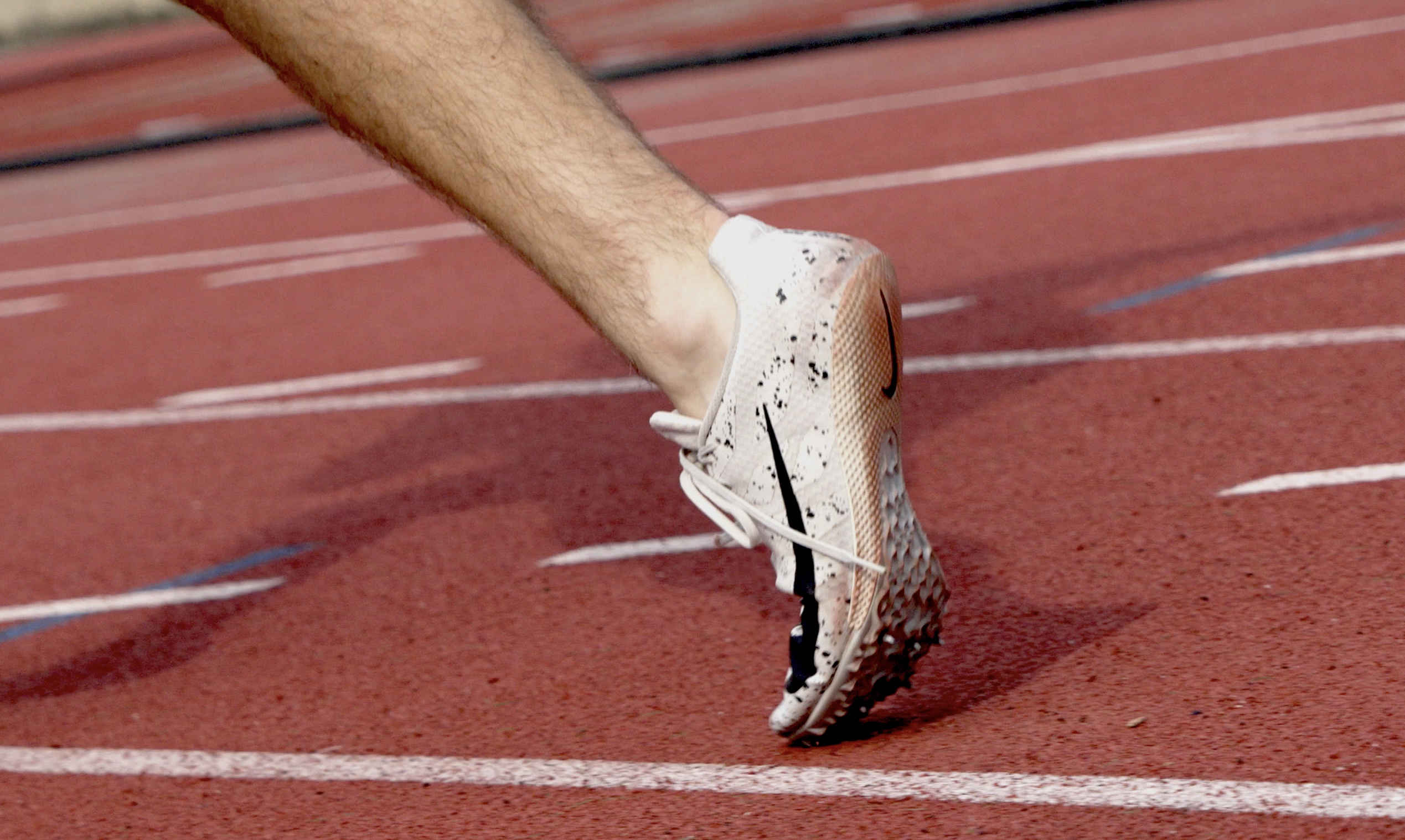
Risk Factors and Potential Causes
Now this is where it all gets pretty tricky. Identifying the root causes of injuries can be a difficult and complex task, especially when ‘experts’ start throwing around nebulous words like ‘prevention’ and ‘mitigation’ that involve singular solutions in their Power Point presentations. I try not to fall into that trap and take a more pragmatic approach to a discussion of the source of catastrophic injuries and potential solutions to help improve the situation. In most of these cases, the term ‘multi-factorial’ has to be applied, as well as a general appreciation of history and political science. Pointing fingers at one particular cause is neither intelligent nor productive.
In this article, I will offer a number of possible causes that have more recently created a synergy around injuries in sport, particularly at the professional level, where time for preparation and recovery is extremely limited. Rarely is there one root cause that spontaneously creates a tendon rupture. While it would be easy to start this list off – as a middle aged male – with ‘age’ as a risk factor for ATR, there are many factors associated with age including inactivity, previous injury, progression of exercise and pharmaceutical use that magnify the risk for older adults. Additionally, I do not feel that a discussion of age – a factor that is unalterable – is going to help us ultimately reduce the risk of ATR in athletes. Hopefully, the following list does raise awareness that leads to improvement.
1. Previous Injury
As with any significant injury, a review of the patients medical history will always play a role in assessing the primary cause of or, at the very least, the circumstances that ultimately resulted in the injury. We discussed the role of pain or discomfort, typically associated with Achilles tendinopathy, preceding an ATR incident and found that there are no conclusive results associating the two events. However, there have been studies that have looked at previous injury and correlations to ATR incidence.
A study by Krill et al looked at 88 ATR cases that occurred in the NFL between 2010 and 2017 by players who had played the previous season in the NFL. Of these 88 cases, 36 athletes (41%) recorded at least one missed game due to injury in the previous season. Of those injuries, 80% involved the lower extremities, with the knee most commonly injured previously (22.5%). The ATR group did demonstrate a significantly higher rate of foot injuries in the previous year when compared with the NFL cohort. It is notable that 11 athletes suffered two ATR injuries in the study period, with all 11 suffering the second injury to the contralateral limb.
If we assume that an ATR injury has been the result of an over-use condition, creating a degenerative circumstance within the tendon and eventually leading to a rupture, it can be theorized that a significant acute or chronic condition on one lower limb can create a compensatory shift of load to the other limb, increasing the wear-and-tear on the previously healthy limb. Thus, it is always prudent to ensure that previous injuries are adequately resolved, achieving a relatively high degree of symmetry between lower extremities so that training loads are evenly distributed on ground contact.
2. Early Specialization
One of the more common explanations I hear when it comes to joint injuries, tendon ruptures, ligament laxity or stress fractures in most sports is the phenomenon known as ‘early specialization’. Athletes are starting to specialize in only one sport, enduring long training sessions from a very early age. The study by Bonanno et al on ATR cases in women’s gymnastics touches on this trend citing the fact that 20 Achilles ruptures were reported in just the first 3 months of the 2020 women’s NCAA gymnastics season, easily outpacing every other NCAA sport. On average, a collegiate gymnast in the NCAA has been involved in gymnastics training for 13 years. The researchers hypothesized that specialization in gymnastics before the age of 10 years would qualify as a risk factor for ATR given the landing requirements of some skills producing forces at the foot and ankle of up to 15 times body weight.
Although gymnastics has been historically known for early specialization practices, other sports are not far behind with athletes specializing in basketball, ice hockey, tennis, soccer and pretty much any other sport where parents can conceive of financial gain, Olympic glory or scholarships for their sons and daughters. Longer training sessions that involve thousands of repetitions of the same skills can have a degenerative effect on all connective tissues with only a miniscule minority surviving this approach to realize their sporting goals. We hear a lot about the one or two successes, but rarely get media coverage of the hundreds of thousands of broken dreams and bodies.
Given that the majority of ATR injuries are hypothesized to involve tissue degeneration, accumulated over a significant period of time, the question we have to ask for young athletes experiencing an ATR incident, “When did it really start to unravel?”
3. Over-Specialization
It is one thing to start early in your career with your heavy schedule of skill rehearsal. However, even if you start late, what is the lifespan of your Achilles tendon if you continue to rehearse the same movements over and over again? It is common to see that defensive players in the NFL have a higher rate of ATR incidence than other players. Ready et al noted that defensive ends (18.8%) and linebackers (15.8%) were the most common position to experience an ATR. Linebackers and defensive backs are commonly backpedalling and then explosively breaking to the ball in off-season training, training camp, practice and games. Defensive ends are running tight curves around linemen at full speed, carrying anywhere from 240 to 280lbs of body weight. How many reps are enough to prepare you for excellence? How many reps are putting you over the top and on the injury reserve list?
We see these types of career changing injuries in baseball with throwing arm shoulders and elbows. In golf, the repetition of swings leads to low back injuries. In gymnastics it is the tumbling and landings that wear away the Achilles tendons. In ice hockey, groin strains and abdominal injuries are the result of skating mechanics and posture. Every sport has a sweet spot of training volume that optimizes performance while avoiding significant injury. As we will discuss later, doing too little can also be a problem, with inactivity leading to atrophy of muscles and connective tissues. Coaches, physical preparation specialists and rehabilitation professionals have to work together to determine the ideal volumes for all athletes, understanding that individualization also plays a significant role.
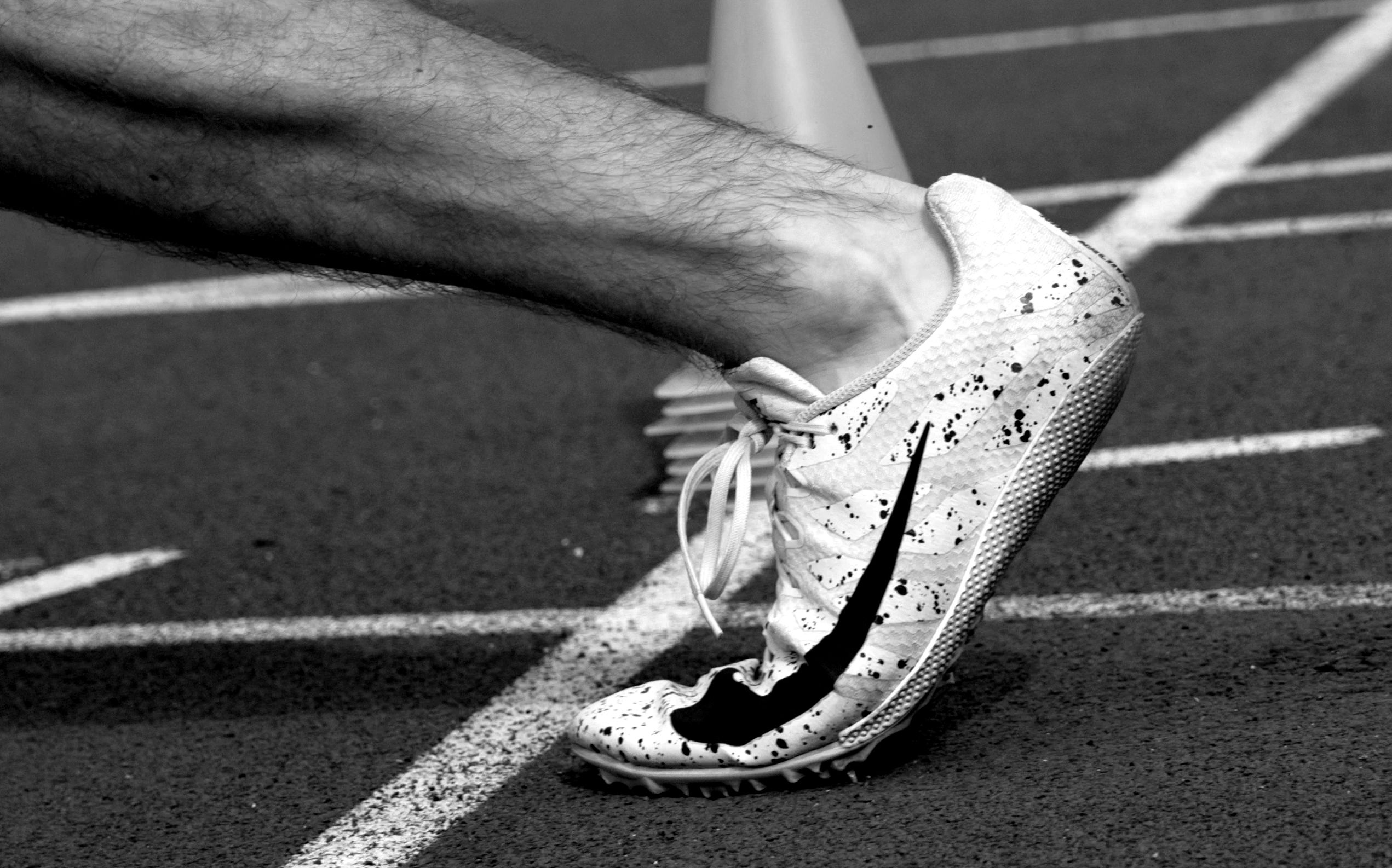
4. Exercise Selection
Choosing the right exercises also plays an important role in preserving athlete health, while also maximizing performance. Once again we are teetering on a fine balance between doing enough and doing too much. Some exercises may seem to offer a specific benefit for a sport, while others may simply offer a general improvement to overall fitness and strength. I have always been keenly aware of the role of the weight room as a means of filling gaps in training and bolstering qualities that may be underused in a sporting scenario. I have never tried to simulate a sporting movement in the weight room.
One activity that I have seen grow in popularity over the last decade has been the use of weighted sleds and resistance methods applied to acceleration and sprinting. While there is still some debate as to the true efficacy of these methods for improving running speed, there is no doubt that it is an activity that is here to stay, particularly with the use of electronically controlled resistance devices. As with many exercises, it seems that we are moving towards a “Heavier is better!” approach, steamrolling any nuanced approach to improving technique or elastic response. However, there is an insidious side effect coming to light as more and more people are implementing resisted sprinting methods.
Acceleration mechanics place a significant amount of stress on the calf, Achilles tendon and foot. We know that many athletes suffer an ATR injury while in the act of accelerating. But what are the true impacts of loading this movement with significant resistance? As I have been anecdotally observing, the number of ATR injuries occurring during resisted sprinting is on the rise. While it may be easy to simply label resisted sprinting as the “Achilles killer,” a more appropriate review of the circumstances may be more appropriate, including an examination of loads, frequency, training history, exercise progression and previous injury history. However, many people are simply going directly to the heavy sled route without observing any reasonable progression of drills and sub-maximal sprints.
I have also noticed a trend towards exercises that try to make weightlifting technique easier for the athlete. Instead of doing regular back squats or front squats with the heels planted on the ground, I am seeing more examples of elevated heel positions on squatting exercises. This places less tension and load through the Achilles tendons and keeps the tendon in a shortened position. Similarly, the trap-bar deadlift seems to have taken the place of regular barbell deadlifts and Olympic lifts in general, placing the weight in line with the body’s center of mass and placing less stress on the lower back. However, the more upright position also provides less loading on the posterior chain, including the Achilles tendon. What are the implications of unloading the Achilles tendons in the weight room? Are people compensating by doing more isolated calf strengthening? These are all reasonable questions when considering the preparedness of athletes when it comes to connective tissue resiliency.
There has been a shift towards isometric exercises for improving tendon thickness and vascularization. While this may be a useful tool, I am always concerned that the pendulum will shift too far to one side and isometric exercise protocols may take up the time and place of conventional dynamic exercise that would acclimate the Achilles tendon for the demands of sport. A balance of stressors and demands should always be achieved in any training or return-to-play program.
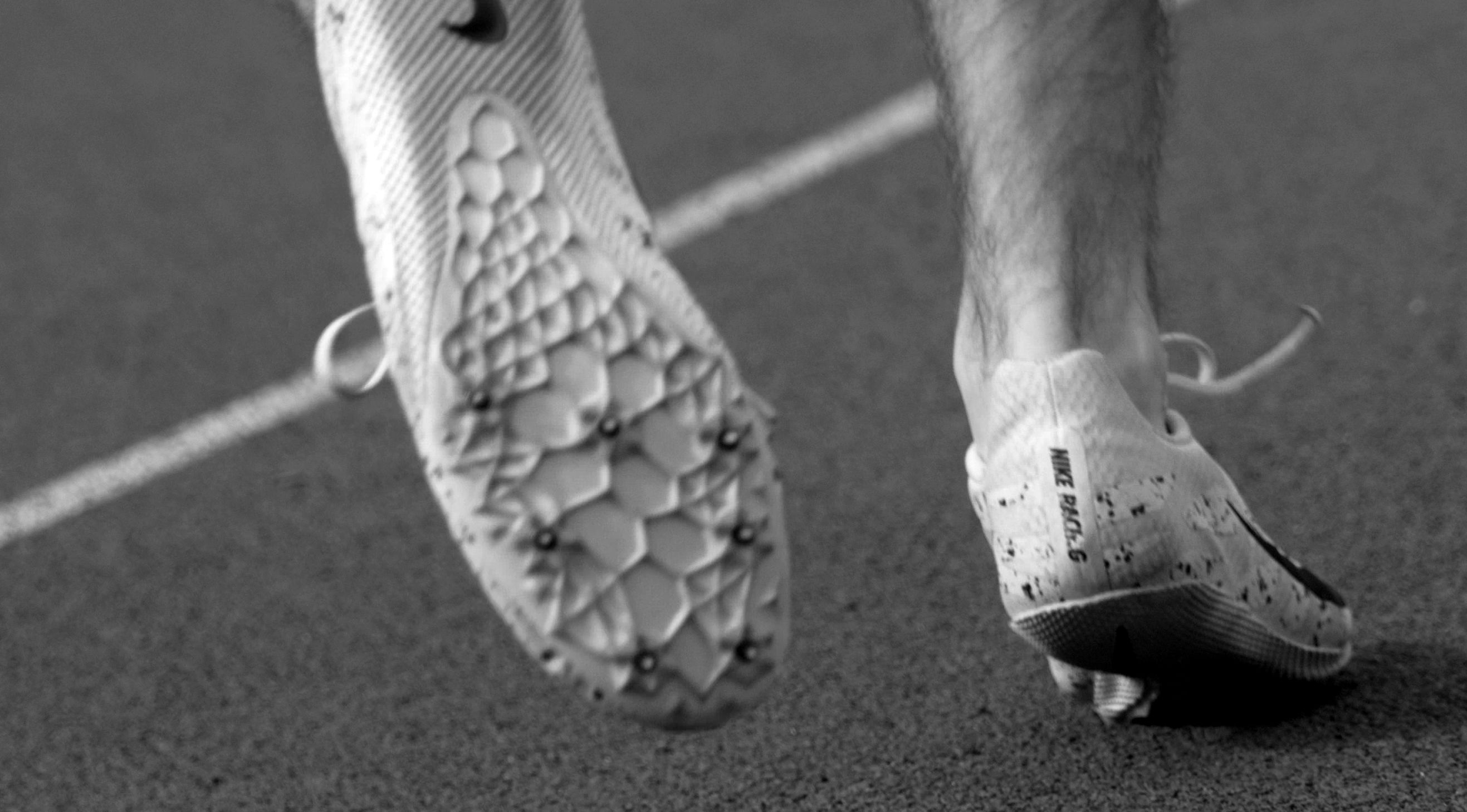
5. Inactivity
The recent studies that have followed both the general population and athletes during the COVID-19 pandemic have found that injuries have increased in number following periods of reduced activity during lockdown measures. We know through ultrasound evaluation that individuals who are less active have thinner Achilles tendons when compared with athletes. It could also be hypothesized that lower activity levels result in a decreased blood supply to the Achilles tendon, resulting in degenerative changes.
The implication for athletes is that longer periods of inactivity in the off-season or due to injury could be followed by ramped-up periods of training and competition that the tendon cannot accommodate. Prolonged inactivity can lead to tissue atrophy and reducing circulation that can impact durability once training and competition resume.
In the case of a torn anterior cruciate ligament or previous ATR injury, the athlete is prevented from load bearing for a period of time with reduced activity levels, and often do not return to regular volumes of training until six months after surgery. When the athlete returns to training and competition after six months, there is a period where the athlete may compensate by loading the contralateral limb more frequently and intensely following their reduced-activity rehabilitation period. This is why we often see subsequent contralateral injuries to the knee and Achilles. We know from research that it may take one to two years for an athlete to fully recover from a traumatic injury and surgery. That leaves a 12-18 month window of susceptibility to another tendon or ligament rupture.
Needless to say, rehabilitation professionals and performance coaches need to be aware of the need to follow periods of inactivity with comprehensive and progressive loading protocols that restore the capacity of the tissues to handle the demands of both conventional training and competition. This will lead us into our discussion of the importance of exercise progression as an injury prevention measure.
6. Exercise Progression Rates
I have been coaching sprinters for over 30 years and in that time I have never had a case of ATR injury in any of my sprinters or sprint-trained athletes. However, I am now hearing about more and more cases where athletes are experiencing ATR injury during basic acceleration in training, practice and competition. I understand that backpedalling, lateral movements and reactive change-of-direction activities place a unique and significant load on the Achilles tendon that make it more susceptible to rupture. The more controlled act of linear sprinting, although intense and explosive, should be easier for an athlete to manage safely if prescribed in a sensible manner.
However, when I begin to dig deeper into the causes of the sprint-related Achilles tendon ruptures, you find that programming is often the culprit. Anyone involved in coaching sprinters understands that a relatively long general physical preparatory (GPP) phase is required to build a foundation of strength and general fitness before athletes truly begin to run fast. A gradual build-up of sub-maximal qualities in regular running shoes on a variety of surfaces (often grass or turf) is adhered to before moving onto a stiffer, more responsive surface using less compliant track spikes. There is a gradual progression of both training and equipment.
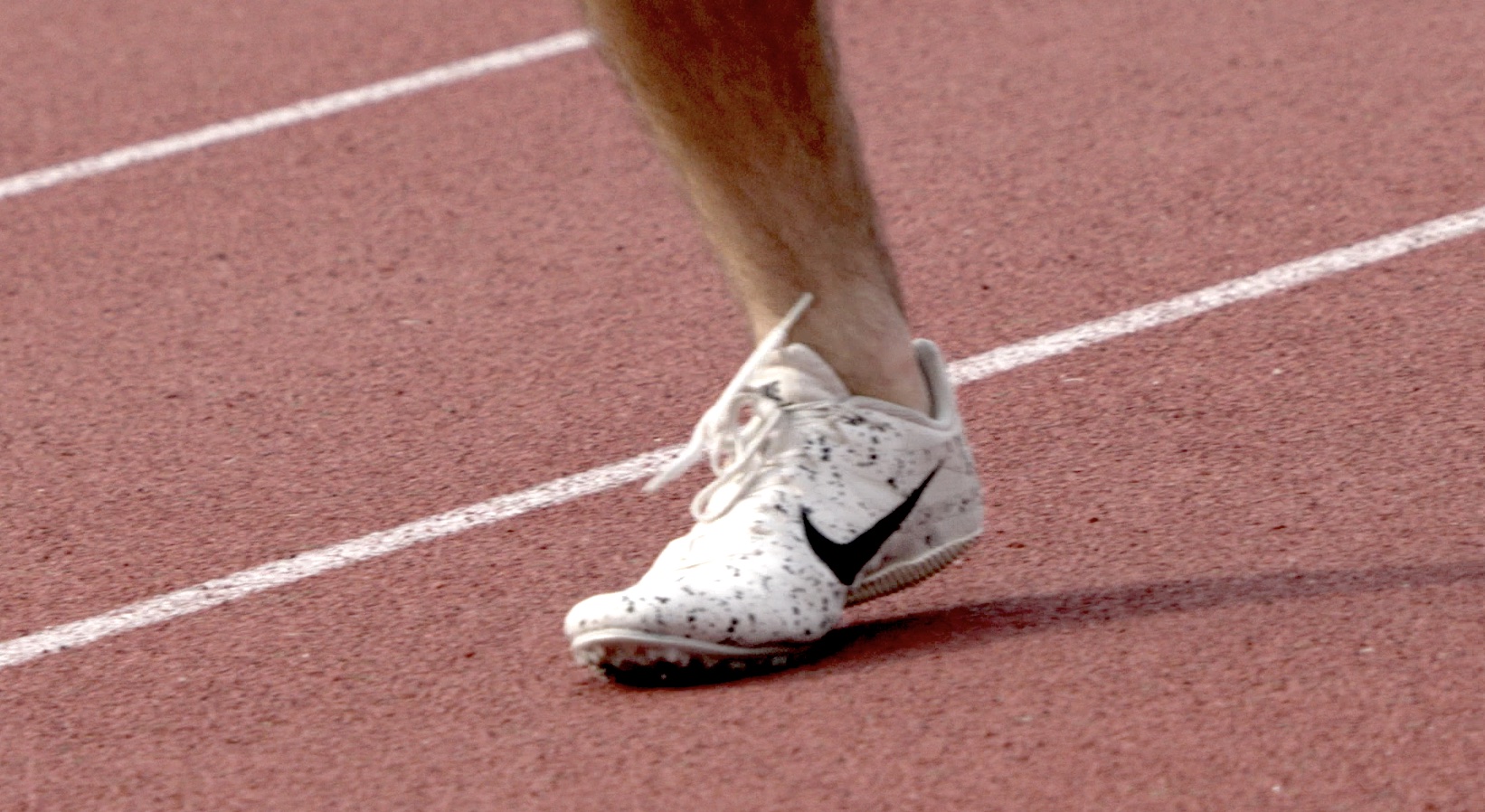
When I examine many of the cases where athletes have suffered an ATR while accelerating or sprinting, you find that a gradual progression for foundational fitness has not been followed. Shorter training windows for many team sport athletes require that coaches and athletes have compressed progressions with a higher density of work. Athletes are training sprints immediately in cleats on high-friction surfaces to ‘get their reps in.’ Ice hockey athletes who are typically in skates that require less ankle mobility for most of the year are often required to sprint in shorter off-season periods without a gradual progression using drills and sub-maximal efforts. NFL football athletes have significant periods of inactivity within the off-season with short training camp periods crammed with lots of intense activities as strength coaches and position coaches scramble to get their reps in. Add in the trend to use heavy resisted acceleration for speed development and you have a genuine recipe for disaster.
Condensed timelines and the rush to be more specific are driving coaches and athletes away from proper exercise progressions. Despite all the sport science innovations that are available to coaches and athletes, traumatic non-contact injury rates are staying the same or rising. Until someone finds a way to slow time down, I do not see the trend changing any time soon.
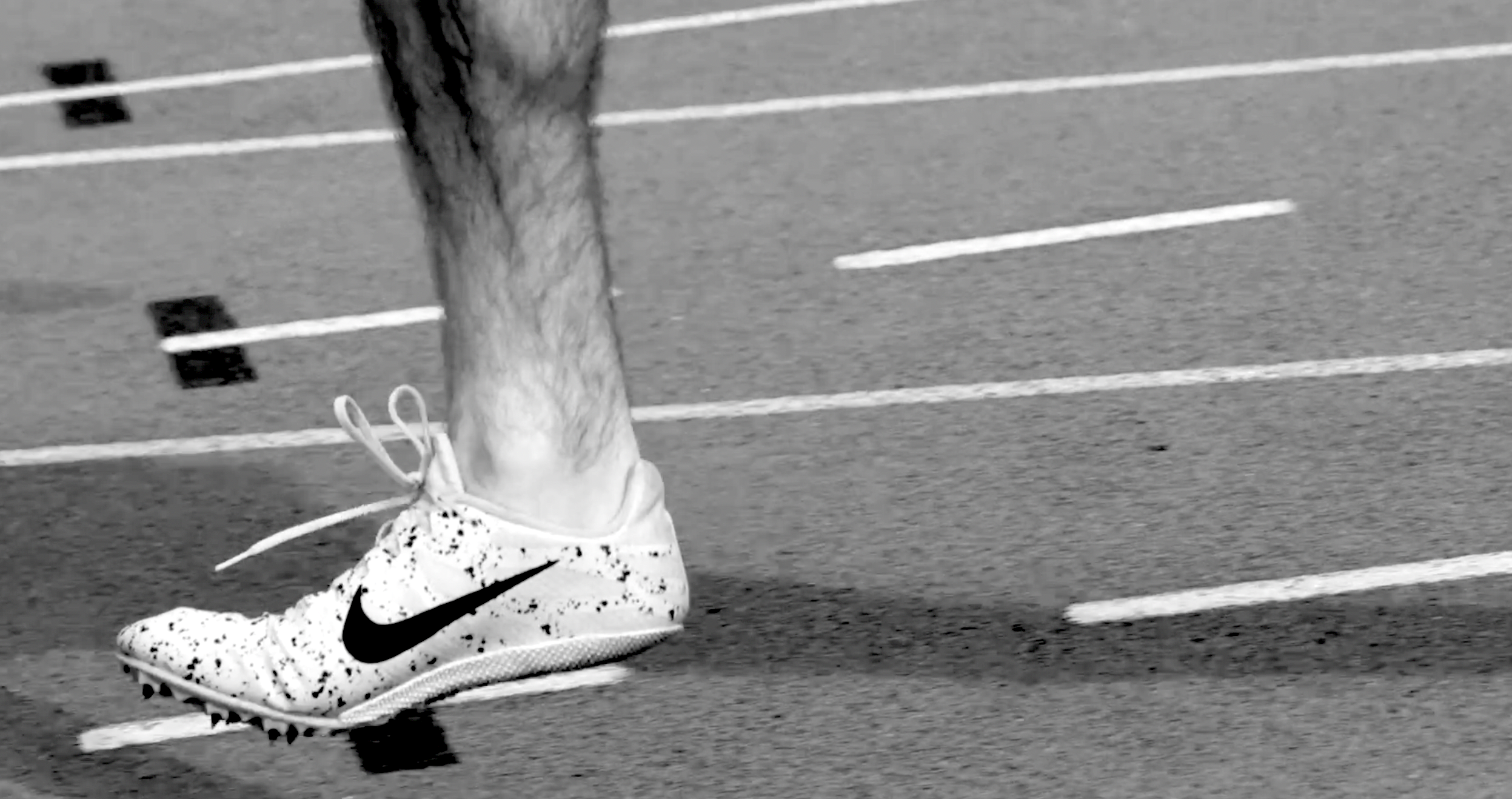
7. Practice and Playing Surface
Artificial turf fields are always an easy target. “It’s the artificial turf that’s creating the injury epidemic!” We even heard this with AstroTurf back in the 1980s and 1990s. Yet the research has shown that we had an average of approximately four ATR injuries per year during the AstroTurf era. More recently, the 2021 study by Ready et al. determined that between 2009 and 2017, 43.8% of NFL games were on grass, with 43.2% of the ATR injuries on grass surfaces, while 56.2% of the games were held on turf, with 56.8% of ruptures on turf. Hence, field surface type does not directly appear to factor in to ATR injuries, with athletes incurring injuries at similar rates on grass versus turf.
We have recently observed similar relationships with non-contact ACL injuries and field surface type, with no significant differences between artificial turf and grass. One NFL team recently replaced their grass field with an artificial turf surface citing injuries as the reason for the change. But the turf versus grass debate has been oversimplified. This past year I was in attendance at the PFATS Medical Summit where a field surface expert was discussing the issue. It was interesting to note that he started his presentation with a pronouncement that there are 30 different fields used for games in the NFL. There is significant variability between all playing surfaces in the NFL – regardless of whether the fields are grass or turf – and this may be one of the main reasons for the injury incidence from week-to-week. Studies by Dr. Benno Nigg on sport surface consistency and ‘expected landings’ by athletes shows that inconsistent surfaces create more injuries than harder, consistent surfaces where athletes can reliably anticipate their landing strategies.
This is not to underestimate the wear-and-tear created by hundreds of repetitions of direction change with rigid cleats grabbing a high-friction field, whether natural or artificial in composition. Yet, whenever athletes slip and slide on a field – as we saw in the recent Super Bowl in Arizona – coaches and players express their extreme disdain for field conditions. Thus, the expectation is that athletes have exceptional traction on every step to carry out their role on the field. But this comes at a cost when traction is deemed excessive and connective tissues and joints suffer. Regardless, athletes must prepare in the best way possible to ensure their tendons are healthy and durable once competition begins.
“Players were seen slipping all game long, changing cleats to try and find some traction. Video of Eagles kicker Jake Elliott slipping on a kickoff became one of the lasting images from the game.”
SportingNews.com
8. Footwear
Any discussion of sport surfaces must also include a review of footwear being used by athletes for training, competition and everyday wear. The interface between foot and surface is assumed by a shoe of some type. Footwear helps to not only protect the foot, but also offer some performance advantages in terms of support, stiffness, cushioning and traction. Selection of proper footwear – including an accurate fitting of the shoe – is critical for both performance and health preservation.
There has been a trend as of late for shoe companies to ‘tune-up’ their shoes to squeeze out more performance from the athlete. This includes, but is not limited to, the following innovations:
- Stiffer sole construction with the inclusion of carbon plates and other rigid materials to transform the shoe into more of a springboard, similar to the ‘blades’ used in prosthetic foot designs for paralympic athletes. In addition, some shoes have been designed to be stiffer to compensate for soft surfaces (baseball) or prevent turf-toe injuries (football). My concern with this concept is that a stiffer foot plate – with less articulations along the length of the foot – simply drives more force through the Achilles tendon. The longer lever created by a rigid foot magnifies the forces experienced in the Achilles tendon, as well as the amount of repetitive stretch placed through the connective tissue. We know that tendon degeneration is a primary cause of ATR injuries. Driving more force into a tendon that is already being taxed by high volumes of training can only increase the risk.
- Proprietary foam designs that provide more bounce and energy return are much more common in running shoes and other athletic footwear. The intent is to unload the lower leg from the elastic functions required for dynamic movement, particularly under fatigued conditions during prolonged exercise. My main concerns with this innovation is that there can be a detraining effect for the muscles and tendons in the lower leg and foot by transferring elastic responsibilities to the foam in a shoe sole. My own personal experience has also demonstrated to me that the rebound provided by such shoes does not feel natural, and can throw off individual proprioception, timing and coordination. The more a shoe over-insulates the foot from the feel of the ground, the more communication between the ground and the foot becomes blunted and distorted.
- Enhanced traction innovations on the bottom of the shoe. As athletes become faster and more powerful, slipping and poor traction becomes their enemy. A Formula 1 race car fitted with slick tires on an ice rink is going nowhere and can result in a catastrophic accident. The same goes for a high performance athlete. But there must be a balance between friction and safety. If the turf or grass surface has very little compliance, and the athlete is changing direction while wearing a rigid and grippy shoe, there is an increased probability of accumulated degeneration of the tendon, as well as acute rupture. If the training or competition surface is very grippy, changes must be made to your footwear choice to prevent the foot from being stuck in the surface and that force being abruptly transferred up the chain to the ankle, knee, hip or lower back.
- Lighter weight footwear designs. While we can all agree that a lighter shoe construction can help mitigate fatigue over long training sessions and competitions, there are greater possibilities that a shoe will begin to break down more quickly and not provide the same stability and protection that could be provided by a more robust shoe. At some point, there is a point of diminishing returns with shoe weight. Companies must stop competing for the title of ‘lightest shoe’ and find a balance between weight, function and durability that works for all athletes, particularly the ones that cannot afford to purchase new shoes every month.
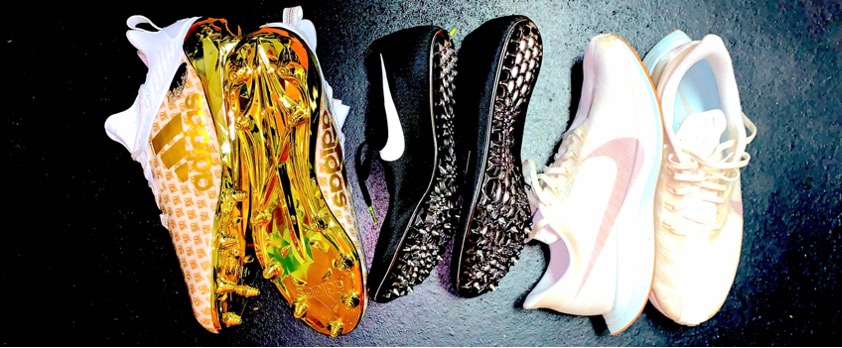
9. Pharmaceuticals
There are some pharmaceuticals that are used by both general population individuals and athletes that can increase the possibility of tendon rupture, and should be on the radar of coaches, athletes, medical professionals and parents. Research has shown that drug use with the following substances has been associated with both tendinopathy and ATR injury:
- Fluoroquinolone antibiotics. Fluoroquinolones are used to treat a range of infections affecting the respiratory systems, as well as prostatitis, skin infections, traveler’s diarrhea and sexually transmitted disease. However, these antibiotics have been associated with tendon lesions, tendinopathy and Achilles tendon rupture. Commonly used fluoroquinolones include ciprofloxacin, levofloxacin, pefloxacin and norfloxacin.
- Glucocorticoids, commonly referred to as corticosteroids, are often prescribed to reduce inflammation in tissues. Corticosteroids are associated with ATR injuries because their use can start a degenerative process in the tendon due to the inhibition in the production of extracellular matrix collagen and a decrease in vascularization. Corticosteroids can be directly injected into an injury site, but studies have also indicated that high doses of inhaled corticosteroids can negatively impact tendon health. Patients taking both fluoroquinolones and corticosteroids had a 46-fold greater risk of ATR injury than those taking neither medication according to Corrao et al.
- Aromatase inhibitors are a commonly used anti-hormonal therapy in the treatment of breast cancer in post-menopausal women, but also used to mitigate the negative side effects of anabolic steroid use when aromatase converts testosterone into estrogen. Aromatase inhibitors can be accompanied by side effects including arthralgia, joint stiffness, bone fracture, osteoporosis, carpal tunnel, tenosynovitis and tendinopathy leading to tendon rupture.
- Statins are drugs that can be taken to lower your cholesterol. But these substances can also affect the structure of collagen fibres, with tendons displaying a fibre alignment that is more disorganized, negatively impacting tensile strength. Statin use can reduce the collagen content of a tendon by slowing the speed of cell regeneration in the tendon. Although tendon ruptures associated with statins are not common, people undertaking vigorous exercise should be mindful of statin dosages, as well as total volume of exercise to minimize risk.
- Retinoid medications – a group of compounds derived from vitamin A – are often prescribed for skin conditions including acne by reducing inflammation, unclogging pores, decreasing the appearance of wrinkles and regulating the growth of cells on the skin’s surface. Bonanno et al. found that retinoid medications were more commonly used in gymnasts who had an Achilles tendon rupture, compared with those who had no rupture. Other research has detected both histopathological and biomechanical negative effects on the Achilles tendon.
- Anabolic steroids. While there appears to be a correlation between anabolic steroid use and tendon rupture, it is still unclear as to why the relationship exists. One theory is that anabolic steroid use is associated with an increase in muscle hypertrophy and strength – often at a very rapid rate relative to non-steroid users – without a corresponding increase in the thickness and strength of the attached tendons. Another theory postulates that anabolic steroids negatively impact tendon structure when combined with intense muscular exercise, making them more vulnerable to rupture, with some studies demonstrating collagen dysplasia where tendons became stiffer and less flexible. A third theory points to the fact that many anabolic steroid abusers often combine their use with corticosteroids and aromatase inhibitors – two substances also linked with tendon degeneration.
10. Diet and Nutrition
While diet and nutrition may have a systemic impact on the overall health and longevity, there have not been any comprehensive studies that have linked these factors to ATR injuries. There has been some discussion on the consumption of alcohol and the incidence of tendinopathy and tendon damage, but the evidence is far from conclusive.
It is important to note that there has been significant research on the use of collagen supplementation in combination with vitamin C to help address Achilles tendon regeneration and overall connective tissue health. Back in 2015, I was in the audience when Dr. Keith Baar presented to team staff at the NFL Combine on the use of vitamin C-enriched gelatin as part of an exercise program to improve collagen synthesis for both injury prevention and tissue repair. This may translate into 15 grams of collagen mixed with 250 milligrams of vitamin C (sometimes in the form of a large glass of orange juice) taken 30-60 minutes prior to exercise.
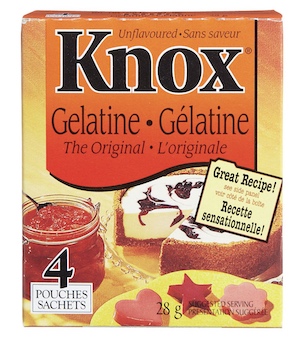
These recommendations provide some tools for practitioners looking to mitigate damage created by repetitive stressful movements experienced throughout the year by explosive athletes performing on varied surfaces in more rigid footwear.
Final Remarks
As more money is pumped into both professional and college sports, the stakes for owners, coaches, athletes and parents increase on an exponential scale. More is better and more repetitions of a specific skillset from an early age carries even more weight. We are seeing the side effects of this phenomenon at a tissue-based level, with careers teetering in the balance. The question becomes, can we intervene in any meaningful way to reduce the rate of catastrophic injury? Or, is it simply the cost of doing business?
I have identified numerous potential factors that may be contributing to an increase in Achilles tendon ruptures in any sport that involves explosive movement. Some of these factors may be under the control of the athlete, while others may not be. However, the sporting community as a whole must embrace responsibility for these types of injuries. It is not the fault of medical practitioners, as they are on the receiving end of this phenomenon. They can voice their opinions to parents, coaches, trainers, facility designers, shoe manufacturers and athletes, but a lot of the causes of the ATR problem are also the same issues that are causing other career-impacting joint and connective tissue injuries including ACL ruptures, meniscus tears, and upper extremity injuries to the shoulder and elbow.
In many cases, athletes unfortunate enough to incur an ATR injury are unaware of the root causes, feeling helpless when they occur. However, we can continue our efforts to educate all stakeholders and increase awareness to help minimize the risk factors associated with ATR injuries. At some point we have come to a point where we are able to achieve improvements in sport performance and entertainment value without a corresponding increase in injury rates. We are not there yet.
References
Bi1, A.S., Azam, M.T., Butler, J.J., Alaia, M.J., Jazrawi, L.M., Gonzalez‐Lomas, G., and J.G. Kennedy. “Increased Incidence of Acute Achilles Tendon Ruptures in The Peri‐Pandemic COVID Era with Parallels To The 2021–22 NFL Season” Knee Surgery, Sports Traumatology, Arthroscopy (2023) 31:2160–2165.
Bonanno, J., Cheng, J.,Tilley, D., Abutalib, Z. and E. Casey “Factors Associated With Achilles Tendon Rupture in Women’s Collegiate Gymnastics” Sports Health, Volume 14, No 3, May-June 2022.
Corrao G, Zambon A, Bertu L, et al. “Evidence of tendinitis provoked by fluoroquinolone treatment: a case-control study.” Drug Saf. 2006;29(10):889–896.
Grassi, A., Caravelli, S., Fuiano, M., D’Hooghe, P., Filippini, M., Della Villa, F., Mosca, M. and S. Zaffagnini. “Epidemiology of Achilles Tendon Rupture in Italian First Division Football (Soccer) Players and Their Performance After Return to Play” Clinical Journal of Sport Medicine. Volume 32, Number 1, January 2022.
Hijlkema, A., Roozenboom, C., Mensink, M. and J. Zwerver. “The Impact of Nutrition on Tendon Health and Tendinopathy: A Systematic Review” J Int Soc Sports Nutr. 2022; 19(1): 474–504.
Krill, M.K., Hoffman, J., Yang, J.W., Hodax, J.D., B.D. Owens and T.E. Hewett. “Previous Foot Injuries Associated with a Greater Likelihood of Achilles Tendon Ruptures in Professional American Football Players” The Physician and Sports Medicine. 2018, VOL. 46, NO. 3, 342–348.
Krill, M.K., Borchers, J.R., Hoffman, J.T., Krill, M.L. and T.E. Hewett. “Effect Of Position, Time In The Season, And Playing Surface On Achilles Tendon Ruptures In NFL Games: A 2009-10 To 2016-17 Review” The Physician and Sportsmedicine, 2017 VOL. 45, NO. 3, 259–264.
Lewis, T. and J. Cook. “Fluoroquinolones and Tendinopathy: A Guide for Athletes and Sports Clinicians and a Systematic Review of the Literature.” Journal of Athletic Training. 2014 May-Jun; 49(3): 422–427.
Mansfield, K., Dopke, K., Koroneos, Z., Bonaddio, V., Adeyemo, A. and M. Aynardi. “Achilles Tendon Ruptures and Repair in Athletes—a Review of Sports-Related Achilles Injuries and Return to Play” Current Reviews in Musculoskeletal Medicine (2022) 15:353–361.
Maffulli, N., “Rupture of the Achilles tendon” Journal of Bone and Joint Surgery. Series A, vol. 81, no. 7, pp. 1019–1036, 1999.
Nyyssönen, T., Lantto, I., Kröger, H., Lüthje, P. and T. Selander. “Drug Treatments Associated with Achilles Tendon Rupture: A Case-Control Study Involving 1118 Achilles Tendon Ruptures” Scandanavian Journal of Medicine and Science in Sports. 2018;28:2625–2629.
Park, Y.H., Kim, T.J., Choi, G.W. and H.J. Kim. “Age is a Risk Factor for Contralateral Tendon Rupture in Patients with Acute Achilles Tendon Rupture” Knee Surgery, Sports Traumatology, Arthroscopy (2020) 28:1625–1630.
Praxitelous, P., Edman, G., and P. W. Ackermann. “Microcirculation After Achilles Tendon Rupture Correlates with Functional and Patient-Reported Outcomes” Scandinavian Journal of Medicine and Science in Sports. 2018;28:294–302.
Qianru Li, Q., Zhang, Q., Cai, Y. and Y. Hua. “Patients with Achilles Tendon Rupture Have a Degenerated Contralateral Achilles Tendon: An Elastography Study” BioMed Research International. Volume 2018, Article ID 2367615, 7 pages.
Ready, L.V., Li, N.Y., Worobey, S., Lemme, N.J., Yang, D.S., Yang, J.W., Krill, M., and B.D. Owens. “Influence of Preseason Versus In-Season Play on Achilles Tendon Injuries in the National Football League” The Orthopaedic Journal of Sports Medicine (2021) 9(12).
Shaw, G., Lee-Barthel, A., Ross, M., Wang, B. and K. Baar. “Vitamin C–Enriched Gelatin Supplementation Before Intermittent Activity Augments Collagen Synthesis” Am J Clin Nutr. 2017 Jan; 105(1): 136–143.
Yang, J.W., Hodax, J.D., Machan, J.T., Krill, M.K., Lemme, N.J., Durand, W.M., Hoffman, J.T., Hewett, T.E. and B.D. Owens. “Factors Affecting Return to Play After Primary Achilles Tendon Tear: A Cohort of NFL Players.” The Orthopaedic Journal of Sports Medicine, 7(3), 2325967119830139: 2019.
Yasui, Y., Tonogai, I., Rosenbaum, A.J., Shomzono, Y., Kawano, H. and J.G. Kennedy. “The Risk of Achilles Tendon Rupture in the Patients with Achilles Tendinopathy: Healthcare Database Analysis in the United States” Hindawi BioMed Research International Volume 2017, Article ID 7021862, 4 pages.

